September 28, 2012
Air Date: September 28, 2012
FULL SHOW
SEGMENTS
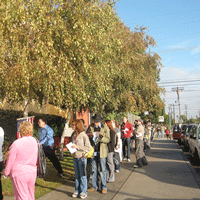
Independent Voters Care About Climate Change
View the page for this story
The economy seems to be the central issue of this year’s presidential contest, but a new study from the Yale Project on Climate Change Communication suggests that global warming could be a hotter topic than anticipated. Researcher Geoffrey Feinberg discusses the findings and suggests how the candidates might win over those crucial undecided voters. (05:05)
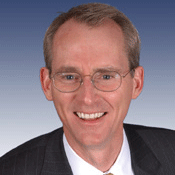
Conservatives and Climate Change
View the page for this story
Polls show many of Mitt Romney supporters don't see climate change as a real problem, but a former Republican congressman believes that conservatives should take the lead on the issue. Bob Inglis, a former representative from South Carolina argues a free enterprise solution is the answer to climate disruption. (05:05)

Power Shift - Allston's Green District
/ Bruce GellermanView the page for this story
In a bid to make green living economically viable and attractive, an ambitious new community is springing up in Boston. Reporter Bruce Gellerman checks it out. (11:50)

New Study Links Genetically Modified Corn to Cancer
/ Bobby BascombView the page for this story
Scientists from France recently published a study that shows massive tumors and early deaths for rats that ate genetically modified Roundup Ready corn. Living on Earth’s Bobby Bascomb tells host Steve Curwood that the controversial research questions the safety of nearly three quarters of the corn grown in the US. (05:30)

GMO Labeling on the Ballot in California
View the page for this story
In November Californians will vote on Proposition 37, a measure that would require manufacturers to label food containing genetically modified organisms. Richard Frank, Director of the California Environmental Law and Policy Center, tells host Steve Curwood that how that vote in California could affect the whole country. (04:15)

The Place Where You Live
/ Gary PaceView the page for this story
In this week's installment of the Living on Earth/Orion Magazine collaboration, The Place Where You Live, Gary Pace takes us to the rugged cliffs of Bodega Headlands in California. (03:00)

Sounds Heard by Aldo Leopold
View the page for this story
Each morning, the conservationist Aldo Leopold took meticulous notes of the dawn bird chorus at his Wisconsin cabin. Now, a team from the University of Wisconsin have used Leopold’s journals to recreate the soundscape that Leopold heard in 1940. Professor Stanley Temple talks about the project and Leopold’s influence on the environmental movement. (12:40)
Show Credits and Funders
Show Transcript
HOST: Steve Curwood
GUESTS: Geoffrey Feinberg, Richard Frank, Bob Inglis, Stanley Temple
REPORTERS: Bobby Bascomb, Bruce Gellerman, Gary Pace,
[THEME]
CURWOOD: From Public Radio International - it's Living on Earth. I'm Steve Curwood. Undecided voters and the hot topic of climate change.
FEINBERG: Not many say that global warming is the key issue for them - only about one in 20 - however, over half - about six in 10 - say that it is among the important issues that will help them decide their vote.
CURWOOD: Maybe the campaigns should take notice. Also, recreating the dawn chorus of birds that naturalist Aldo Leopold described in his iconic Sand County Almanac.
TEMPLE: At 3:30a.m., with such dignity as I can muster, I step from my cabin door bearing in either hand a pot of coffee and a notebook. I get out my watch, pour coffee and lay notebook on knee. This is the cue for the proclamations to begin.
CURWOOD: Listening just as Leopold did. We'll have those stories and more, this week on Living on Earth. Stick around!
[MUSIC: Boards Of Canada “Zoetrope” from “In A Beautiful Place Out In The Country” (Warp Records 2000)]
ANNOUNCER ONE: Support for Living on Earth comes from the National Science Foundation and Stonyfield Farm.
Independent Voters Care About Climate Change
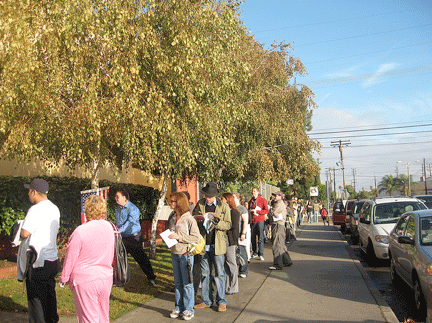
Polling suggests that independent voters who line up in November are likely to care about climate change issues. (Photo: bunnicula)
CURWOOD: From the Jennifer and Ted Stanley Studios in Boston, this is Living on Earth, I’m Steve Curwood. The economy may be the most important issue this election season, but global warming could be a hotter topic than expected. A new poll out from Yale University finds that a broad majority of undecided likely voters – as well as Obama-leaning voters – view climate change as real and want Washington to do more to address it. The Yale Project on Climate Change Communication conducted the survey this summer and co-author Geoffrey Feinberg explained the results.
FEINBERG: The findings that we're going to talk about today we released because we thought in the run-up to the election people would be interested in how undecided likely voters think about climate change. What we do is look at a number of different variables that help us predict propensity to vote, such as, you know, for example, are you registered, we only look at people who say they're likely to vote, people who know where to vote, those kinds of things all go into the mix to help us look at people we think are particularly likely to vote.
CURWOOD: Now, how big was your sample?
FEINBERG: We talked to a total of about 1100 Americans and about 700 of them we're defining as likely voters.
CURWOOD: And 7% of the likely voters were undecided?
FEINBERG: That's our estimate, yes. And don't lean toward one or the other candidates.
CURWOOD: What are the views of those likely undecided voters in terms of climate?
FEINBERG: These likely undecided voters look an awful lot like likely Obama voters. Virtually all of them believe global warming is happening. 80% of them, 8 in 10, compared to Obama voters, 86% of them believe that it's happening. And this is in contrast to likely Romney voters. Fewer than half of them believe that global warming is happening, only 45%, and actually one in three of them think it's not happening.
CURWOOD: How many of these undecided voters say that a presidential candidate's position on global warming will be one of several factors determining how they might cast their votes?
FEINBERG: Over half. What we see is that not many say that global warming is the key issue for them, only about one in 20. However, over half, about six in ten, say that it is among the important issues that will help them decide their vote.
CURWOOD: What proportion of them believe that global warming is caused by anthropogenic, that is, human, activity?
FEINBERG: Actually, the majority do. And again, they look very much like Obama voters and very different from likely Romney voters. Two in three believe that global warming is caused mostly by human activities, and only about one in five believe that it's caused mostly by natural changes in the environment, and that's virtually the same as Obama voters. Likely Romney voters, however, look very different. There only one in five think that if global warming is happening, it's caused by human activities and half of likely Romney voters think it's caused by natural changes in the environment.
CURWOOD: What about these undecided voters and their attitudes about the story from science? How many of them agree that science says global warming is real?
FEINBERG: I'll just state at the outset that there is, in fact, a virtual consensus among climate scientists that global warming is happening and there have been a number of academic papers which document this. And two in three Obama voters understand that. Relatively few Romney voters, 22%, believe that there is a consensus and in fact the majority of Romney voters, over half, 57%, think there's a lot of confusion and debate among scientists as to whether or not global warming is happening.
Now, the undecideds fall between the two. A little fewer than half, 46% of the undecideds, think that most scientists think global warming is happening and about the same amount, about 42%, think there's a lot of disagreement.
CURWOOD: Based on your polling data, how would you advise the candidates to handle themselves on climate in the upcoming debate?
FEINBERG: Both candidates want to win over these undecideds. And so I think Mr. Obama might do well to reiterate that he believes global warming is happening, that it's not a hoax, he believes it's human-caused and that we need to find solutions to solve the problem.
Now, Mr. Romney is in a tougher spot because a number of his base either doesn't believe it's happening or doesn't think it's human-caused so I suppose if I were Mr. Romney what I would say is that: look, this is something that needs to be taken very seriously, it's something that Democrats and Republicans need to work on carefully together to ensure that the science is good, to ensure that solutions are good, and that if in fact it is happening, that we need a free market approach to solve the problem. I think that might help him with his base and with undecideds. But, you know, no one's paying me the big bucks to be an advisor to one of these guys, so take that for what it's worth.
CURWOOD: Geoff Feinberg is research director at the Yale Project on Climate Change Communication. Thank you so much, Geoff!
FEINBERG: It was my pleasure. Thanks for having us!
Conservatives and Climate Change

Former Republican Congressman Bob Inglis (Photo: Wikimedia Creative Commons)
CURWOOD: Well, one Republican with a free market approach to the risks of climate disruption is former Congressman Bob Inglis. His conservative ideas include a carbon tax. He represented the Greenville Spartanburg region of South Carolina for a dozen years, earning stellar ratings from the American Conservative Union and the Christian Coalition. Congressman Inglis joins me on the line - welcome!
INGLIS: Great to be with you, Steve. Thank you.
CURWOOD: Now, you say Republicans need to stop equivocating about the reality of climate change.
INGLIS: Yeah, I think what we've been doing is sort of assuming that we don't have a very good answer, and the other team has an answer and so therefore let's just decide not to compete. You know, if you think that you're not competitive then the best thing to do is to diminish the value of the competition. What I would submit, though, is actually conservatives really are the indispensible partners in this, the ones that must come forward with a solution. Two reasons: one is, anything big like this really does require both parties to work together on it, that's one reason. The other is really the country is looking for this kind of muscular free enterprise answer that conservatives are very good at delivering.
CURWOOD: What kind of price do you think Republicans will pay if they don't figure out some way to deal with climate change?
INGLIS: Well, I think that for young people, this is an issue that matters because they plan on staying around a while. I guess if you're near the end of your life cycle you're not so concerned about something that's maybe 50, 75, 100 years away. But if you're young, you think, 'Gee, that's within the life of my children that I hope to have.' So it means we need to get relevant for those folks so we can show that, really, conservatism has an answer here.
CURWOOD: Now you most famously introduced a carbon tax while you were in the Congress to address climate change. How would that work?
INGLIS: It's basically a tax swap. It involves changing what we tax. Right now, we tax income. We don't tax emissions. So why would we not want to swap it so we reduce taxes on something we want more of, which is income, and we shift the tax onto something we want less of, which is carbon dioxide.
And so that's what my bill would've done. It's a replacement for cap and trade. I voted against cap and trade. I found it way too complicated, the free allocations were embarrassing, it decimated American manufacturing and it was a massive tax increase. So for all those reasons I voted against cap and trade, but I think that a revenue neutral tax swap where there's no additional take to the government, it's just we're changing what we tax, reducing taxes on income, imposing taxes on carbon dioxide and the result is, not only do we have more money in our pocket to afford the innovation, but the innovation is driven by consumers who feel a need for better technology.
CURWOOD: If we had the Inglis carbon tax today, how would it affect people's electric bills or what we would pay for gasoline?
INGLIS: Well, of course both would go up and that's what is difficult in the political process because you make that admission and then you think, 'Oh, golly, that ain't going to work too well.' Then you hope that people hear the rest of it. Yes, the price of electricity would go up but two things: one, in the proposal I made you'd have a larger paycheck because we would have reduced some form of income taxation. The second is we'd be paying the full cost of coal-fired electricity, for example, at the meter, rather than in hidden ways.
The reality is, we're already paying the full cost of coal-fired electricity. We pay in higher health insurance premiums, because 23,600 people die prematurely each year in the United States because of the soot from coal-fired electricity. There are over 3 million lost work days because of that soot. Why not pay at the meter? Be honest about it. Be fully transparent. Be accountable. And then, because you've got money in your pocket from the corresponding tax cut elsewhere, we innovate away from coal-fired electricity.
CURWOOD: Congressman Inglis, the phone rings, it's Mitt Romney. He says, 'Give me advice as to how to deal with climate change, given that undecided voters seem to be breaking for Obama on this issue.'
INGLIS: Well, I'd say that Governor Romney, what you should do is be the champion of free enterprise that you are. That's your greatest strength. The country is looking for somebody that can lead us out of the great recession. Let's show the country that there's a free enterprise answer on energy and climate and in the process be relevant, especially to those independent voters who are inclined to pay attention to this issue.
CURWOOD: Bob Inglis is a former Republican member of Congress from South Carolina. He now heads up the Energy and Enterprise Initiative at George Mason University. Thanks so much, Congressman!
INGLIS: Great to be with you, Steve! Thanks.
[MUSIC: Bjork “Pagan Poetry” from Vespertine (Elektra Music 2004)]
CURWOOD: Just ahead – Why the apartment waiting list is already long at the new Green Zone in Boston. Stay tuned to Living on Earth!
[CUTAWAY MUSIC: Jeff Lorber “Toads Place ‘94’ “ from West Side Stories (Verve Records 1994)]
Power Shift - Allston's Green District
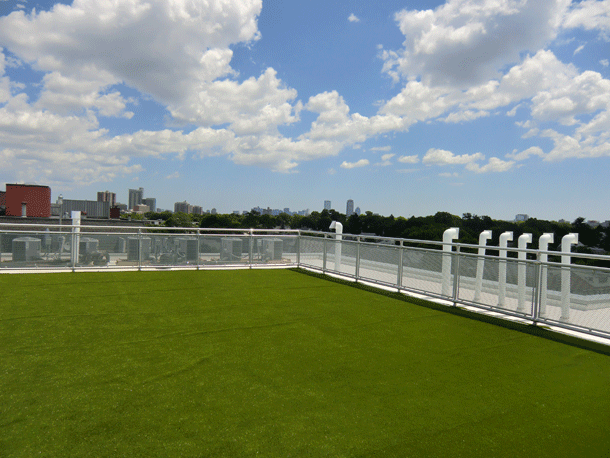
Rooftop lawn of The Element. (Photo: The Mount Vernon Company)
CURWOOD: It's Living on Earth, I'm Steve Curwood.
[SFX: SUBWAY]
CURWOOD: Next stop: the Allston Green District. It's the scene of a large-scale environmental and economic experiment in urban living, just 4 miles from downtown Boston, and designed to meet the city’s energy efficiency guidelines for new construction. Bruce Gellerman has our report.
GELLERMAN: Allston is a neighborhood of decaying industrial buildings, storefronts, and off-campus student housing. Here, the Green Line subway runs above ground down the middle of Commonweath Avenue - past a world array of ethnic restaurants, bars, and clubs. And just one block off Comm Ave…
[SFX: SCRAPING BRICKS]
GELLERMAN: Workers are putting the finishing touches to the first of 7 buildings —each unique — that together promise to transform this neighborhood. A mason scrapes the extra cement from a newly laid brick wall...

The front of The Element (Photo: Bruce Gellerman)
[SFX: SAW]
GELLERMAN: ...and sheet metal worker Shane Meredith cuts the final pieces for a work of art that doubles as a first floor window grate.
MEREDITH: Usually they have straight bars on them. It almost looks like a prison, but something like this… it’s strong enough, it can keep people out, and it's very pleasing to the eye. The more fancy you get the more money it costs - yeah, definitely. It’s supposed to represent grass blowing.
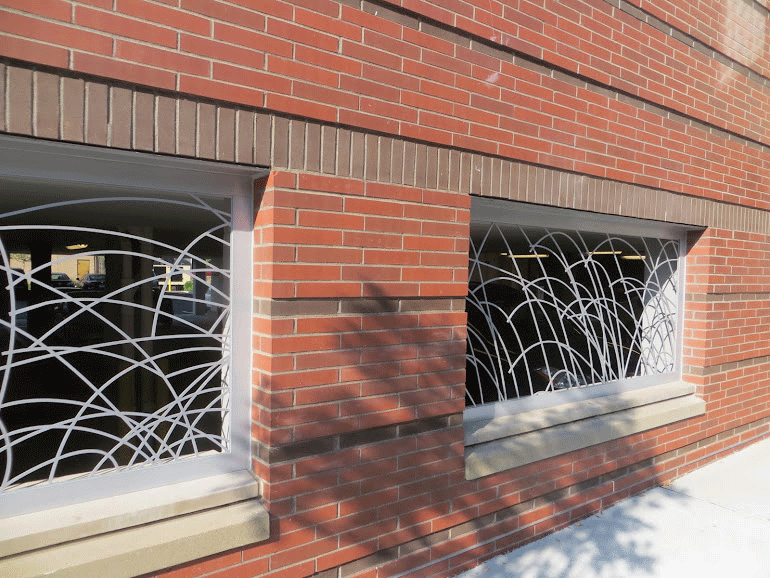
The public art work city grass doubles as a window grate. (Photo: Bruce Gellerman)
GELLERMAN: The window grate sculpture is called City Grass – functional urban art designed by inner city kids. City Grass is the logo for The Element, the first building in an ambitious 125 million dollar project. When it's all done it'll be a 500 apartment community filled with state of the art environmentally friendly features. And says developer Bruce Perceley, lots of art – much of it made from recycled materials.
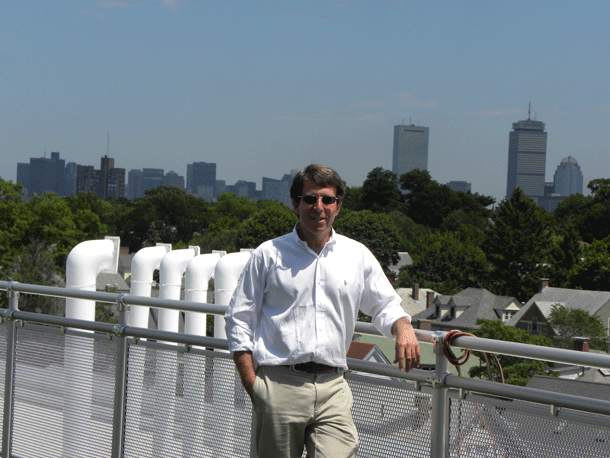
Bruce Percelay is CEO and Founder of Mount Vernon Company on top of The Element. (Photo: The Mount Vernon Company)
PERCELEY: What we have done is designated areas throughout this whole neighborhood for public art. And we feel public art humanizes a neighborhood. This building is a blank canvas that allowed us to apply all our creativity to it and when you go throughout the building you're gonna see that virtually every square inch has some idea that we have pulled out of thin air and applied.
GELLERMAN: Let’s go.
[SFX: WALKING OUTSIDE AND ENTERING THE BUILDING FROM STREET]
GELLERMAN: The lobby of The Element will be heated with a high efficiency gas fireplace. All the walls are super-insulated. The windows are floor to ceiling- triple pane, allowing sunlight in, keeping street noise out, and indoor temperatures constant. Little things add up.
PERCELEY: To encourage bicycle use we have bike racks throughout the entire garage and we have interior bike storage. So this building is extremely bicycle friendly.

The green district offers a rental bike rack and the Boston subway 1 block away. (Photo: Bruce Gellerman)
GELLERMAN: You can rent a bike on-site, or charge your electric car. And in the basement, toss your trash into a high-tech single stream, centralized sorter. On one building there'll be solar panels, on another maybe a wind turbine. That's if Boston officials allow it - so far, they haven’t - wind turbines aren't efficient enough.
[SFX: DOOR UNLOCKING]
GELLERMAN: In 2007 Boston became the first city in the nation to adopt green building regulations. The regs require large-scale developers to dramatically reduce climate changing emissions from their buildings and adhere to the US Green Building Council’s LEED certification standards.
PERCELEY: This may be the first rental property, green designated community, in the east coast, and we have created a comprehensive green environment that will provide a new standard of green living for rental properties perhaps anywhere.
GELLERMAN: As CEO of The Mount Vernon Company, one of Boston's largest real estate firms, Bruce Perceley is a persuasive salesman. He’s always pitching. He got city officials to designate his seven building community the Allston Green District – that's also the new name for the subway stop just down the block. But selling residents on going green takes more than just offering energy efficient features and appliances. It’s called for carrots – luxury amenities – and sticks – strict rules for green living. First: some carrots.
[SFX: BEEPING]
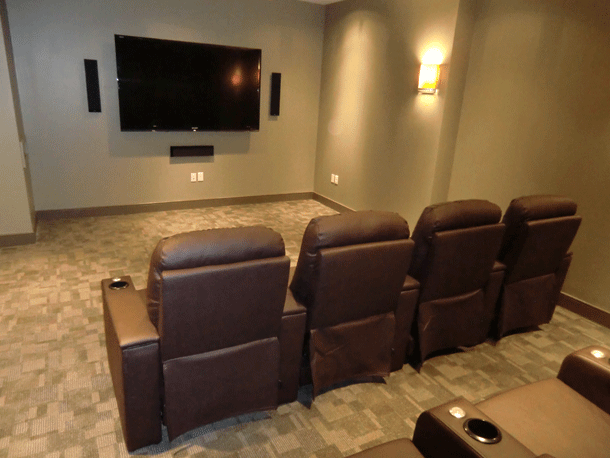
The screening room is one of the eco luxury amenities. (Photo: Mount Vernon Company)
PERCELEY: We’re going to take you to the movie theater and the common room and what the movie theater tells you is that green living doesn’t necessarily mean spartan living.
This is a club room with a full kitchen and it will have furniture so it will double as a lounge. Every few weeks we are going to provide cooking classes for our tenants. This is a population that's generally between the age of 25 and 35 and doesn’t always eat right, so we’re gonna provide then with an education on how to cook for themselves in a healthy way. And we are very curious to see what kind of turnout we're gonna get but I suspect this will be a popular feature of this building.
GELLERMAN: Then there’s the amenity born of one of Bruce Perceley's pet peeves - literally a pet peeve. PET is the plastic found in many single-use water bottles.
PERCELEY: This is a hydration station, and you’ll be able to take a high quality re-useable sports bottle, and you put it up to the nozzle against the wall, and you receive reverse osmosis thoroughly, totally purified water. Because I personally object to the ridiculous waste of plastic bottles that take forever to decompose.
GELLERMAN: So do they have to pay extra for this or is it standard issue part of the rent?
PERCELEY: The hydration station and many other features in this building are included in the rent.
GELLERMAN: So what does it cost to live here?
PERCELEY: Rents start at 1700 dollars and they go as high as 2800 dollars. Now, comparatively, for living of this quality in downtown Boston this is about half the price.
[SFX: ELEVATOR]
GELLERMAN: Ok, so now where are we going?
PERCELEY: Right now we’re going to go to the roof deck. And this is a feature of this building that is quite remarkable in that even though this is a building in Allston it probably is the nicest roof deck in the city of Boston.
GELLERMAN: Oh this I gotta see…(LAUGHS) It's like a putting green. It’s like a golf course here!
PERCELEY: We have 2800 square feet of recycled artificial turf that to the foot feels like real grass. This is not short Astroturf — it bends like grass does. And then along the back of this we will have set up planters that will serve as organic roof gardens. We will have ipod stations and we have speakers so you can relax and listen to music.
GELLERMAN: And you've got a million dollar view of the skyline of Boston.
PERCELEY: At early evening that view is magical.
GELLERMAN: So the Allston Green District offers a lot of carrots, but there is one big stick. Bruce Perceley calls it a green declaration all tenants will have to sign before they can move in.
PERCELEY: And that green declaration asks the tenants to cooperate with us in making this building the most environmentally sensitive building anywhere. Some of the aspects of the green declaration are institutionalized into the building. For example, we are the first landlord in Boston to separately meter for water. When water use is paid for by the tenant it reduces consumption by 40 percent. So therefore we’ve given them a little bit of a prod because it will hit them in the pocketbook. So water conservation will happen by itself.
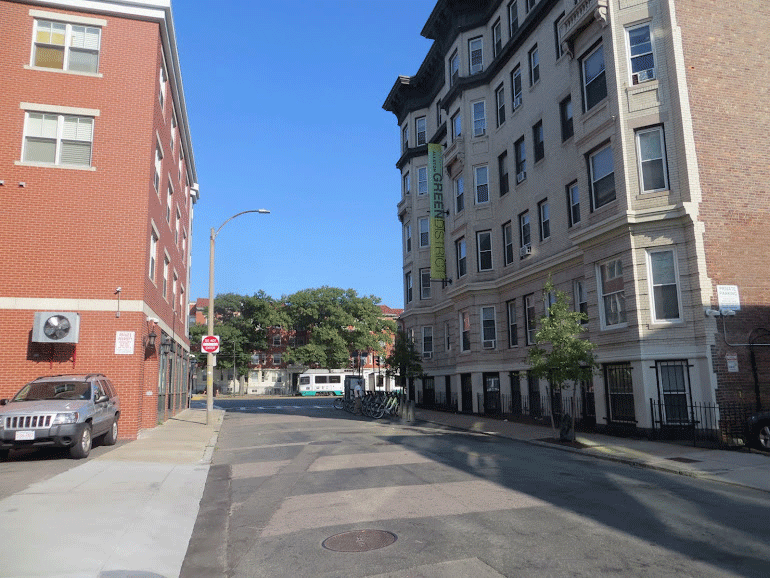
Building one in the Green District is ready for occupancy. (Photo: Bruce Gellerman)
GELLERMAN: So shorter showers?
PERCELEY: Shorter showers, perhaps when they go to use their dishwasher it will be full instead of half full, they will do their laundry more efficiently, and they will be more mindful of how they use water.
GELLERMAN: Well, how do you reinforce that? I mean, do you have the green police knock on their door one night in the middle of the night saying, 'Hey, come out with your hands up, you've been using too much water?'
PERCELEY: The best reinforcement is the fact that they are paying for it. The wallet is the reinforcer.
GELLERMAN: When somebody comes to you and they say, 'You know, this is a really interesting idea. I'm interested.' Do you interview them to make sure that they are your type of tenant?
PERCELEY: That's a very fine line...
GELLERMAN: You're not green enough for me?
PERCELEY: Yeah, we're doing it the other way around. We’re promoting this as a green community and we're hoping green people show up.
GELLERMAN: One of the first green people to show up and sign a lease at the Allston Green District was 20-something Kimberly Lauber. Her dad was carrying boxes off the elevator, helping her to move into her new eco-apartment.
LAUBER: I really like the idea of an eco-friendly area and that they’re using eco-friendly materials to build the building, especially the floors – I really liked that. I like the spaces, we like the really big windows. And they said a lot of young professionals were living in the building which was also nice so we thought that it would be a nice place for us to get our first apartment actually.
GELLERMAN: What about the green declaration? You had to sign a declaration; did that bother you at all?
LAUBER: I mean, no. I mean, it was one of those things that came additionally later but I thought it was a good contribution to earth and to be green and to contribute to the community, make it better.
PERCELEY: We really do want this to become the beginning of something big.
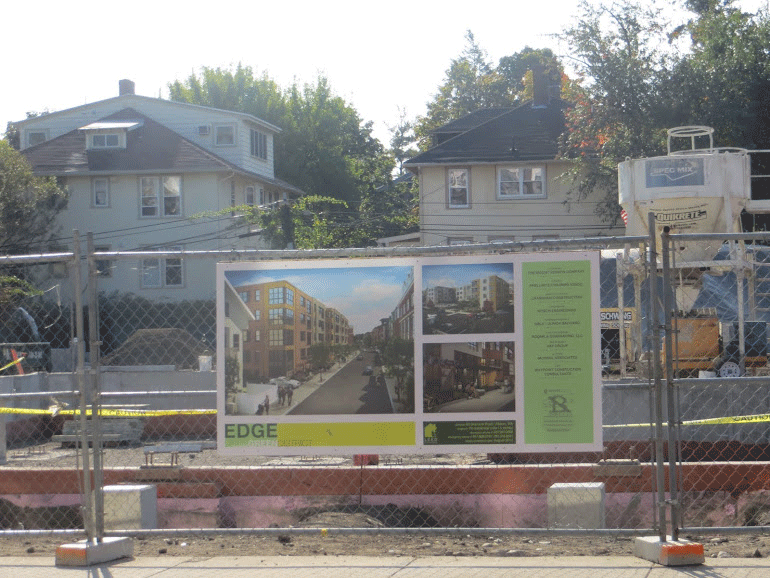
Work has already begun on building two, The Edge , in the green district project. (Photo: Bruce Gellerman)
GELLERMAN: Developer Bruce Perceley says his big idea goes beyond renewable energy, retrofitting or recycling. It’s about human values, social environments, and sustaining a community.
PERCELEY: That’s a very important point. We are trying to create an environment that encourages interaction. People often come to these apartment buildings and they only get to know each other if there is a fire drill or a power outage and they all get together. We want to make this a place where people get to know each other and to create a true sense of community within the building.
[SFX: SUBWAY BELLS]
GELLERMAN: So green start to finish. How about green - your bottom line? Can you make money doing this?
PERCELEY: That’s a very interesting question. Green does have costs associated with it. That said it is our long-term belief that it will enable us to attract a better tenant,
It will enable us to retain the tenants longer, and the ultimate testimony to that is we preleased 100 percent of a hundred unit building before it was completed. That is virtually unheard-of. If that doesn’t say that green works I don’t know what does.
GELLERMAN: Bruce Perceley, CEO of the Mount Vernon Company and developer of The Allston Green District. For Living on Earth, I’m Bruce Gellerman in Allston, Massachusetts.
[SFX: SUBWAY]
[MUSIC: Booker T and The MG’s “Green Onions” from Green Onions (Stax Records 1962)]
New Study Links Genetically Modified Corn to Cancer

Roughly 80% of the corn grown in the US is genetically modified. (Photo: Victor Bayon)
CURWOOD: A new study from France is casting doubt on the safety of a large portion of the commodity food crops we eat here in the United States. European researchers looked at the health effects of feeding Monsanto’s Roundup Ready corn to laboratory rats and their results were startling.
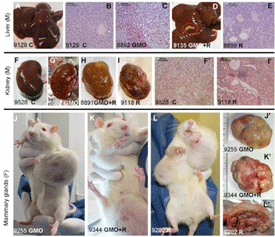
Seralini’s paper includes these photos of tumors found in rats that ate genetically modified corn and Rounup. (Seralini et al)
Living On Earth’s Bobby Bascomb has been investigating the study. She joins me now. Hi there, Bobby.
BASCOMB: Hi Steve.
CURWOOD: So, Bobby, what exactly was this study looking at?
BASCOMB: Well, roughly 80% of the corn that we grow here in the United States is genetically modified and nearly three quarters of it is Roundup Ready. That means it’s genetically altered to tolerate the Monsanto herbicide Roundup. So, that chemical tolerance is built right into the DNA of the corn. The research out of France was looking at the long-term health of rats fed a steady diet of Roundup Ready corn.
CURWOOD: So, what exactly did they do? What was their methodology?
BASCOMB: They had 200 rats that they split into four groups and followed for two years. One group was fed the genetically modified Roundup Ready corn that had been sprayed with Roundup. A second group was fed the GM corn not sprayed, a third group ate no GM corn but they drank water that had traces of Roundup in it at levels considered safe by the government, and a fourth group was a control – they ate no Roundup corn or water.
CURWOOD: And I understand that they found some pretty significant results.
BASCOMB: They did. Here's the lead author of this study, Gilles-Eric Seralini:
SERALINI: So we have seen after four months that the tumors began and then after one year there was high increasing of the number of tumors, up to almost every rat having two or three tumors for the female rats for the lowest doses of Roundup.
BASCOMB: So Seralini says the rats that ate the genetically modified corn, whether or not it was spiked with Roundup, or drank the Roundup-laced water, got tumors earlier than rats in the control group. They also died much earlier: 50% of male rats died early, compared to 30% not fed the Roundup corn. And 70% of females died early compared to just 20% for the rats not fed the Roundup corn.
CURWOOD: Wow, those are some pretty remarkable statistics. What did these rats die
from?
BASCOMB: Well, they had cancer, pituitary and kidney disease and tumors. The female rats especially had more large mammary tumors — those are breast cancers. And they found the male rats had four times more tumors than the control rats and developed them a year and a half earlier.
CURWOOD: Now Bobby, Roundup Ready corn has been on the market since the mid ‘90s and it's approved by the FDA. The studies before this have found it to be safe. So, how is this research coming up with such radically different results?

(Photo: Kay Ledbetter)
BASCOMB: Well, Steve, there's two things. First, the four months Seralini mentioned earlier is important. That's when they started seeing tumors. Virtually all the studies that had been done before this lasted just three months. Also, almost all the prior research was done by industry, so by Monsanto itself or researchers paid by Monsanto. Independent
scientists in the U.S. need permission from the company to get Roundup samples to work with because it’s a patented product. And Monsanto, of course, controls that very tightly.
CURWOOD: Now, what does Monsanto say about all this?
BASCOMB: Well, they declined to talk to me on tape for this story but they did issue this statement.
ANNOUNCER: “This study does not meet minimum acceptable standards for this type of scientific research, the findings are not supported by the data presented, and the conclusions are not relevant for the purpose of safety assessment."
BASCOMB: Specifically, Monsanto says the study size of 200 rats is too small. And they say that the rats used in the French study are pre-disposed to tumors and cancer. Which is absolutely true — about a quarter of the control rats that ate no Roundup corn did die early. But disease and early death in the rats that ate any amount of the genetically modified corn was two to five times higher than the control group. And these rats are exactly the same type as Monsanto uses in its own studies.
CURWOOD: Is this new research likely to change how we regulate genetically modified
foods here in the US?
BASCOMB: Well, the Food and Drug Administration says they are still reviewing the study and can’t comment. But FDA doesn’t actually require any pre-market safety
assessment of genetically modified food crops to begin with. I talked to Michael
Hansen, he’s a senior scientist at Consumers' Union. He says that genetically
engineered foods are treated like any other plant that has been bred for certain
traits.
HANSEN: Technically, they are regulated no differently than conventionally bred
plants. The FDA has actually never made a conclusion about the safety of any of
these engineered foods that are on the market.
CURWOOD: So, what’s next?
BASCOMB: Well, most scientists will tell you that we need to do more research. This study needs to be done again to see if it gets the same results. And Hansen, of Consumers' Union, says ideally with a larger number of rats, so 400 instead of the 200 used here.
HANSEN: The data are suggestive and they should require follow up with larger
sample sizes. Why can’t countries get together and do a definitive study that
everybody agrees is a proper sample size? Put up the money and see that it’s properly
done.
BASCOMB: Well, the French study cost nearly 3 million dollars so getting some international cooperation to finance further research with a larger sample size will really be key here. But considering that the vast majority of corn in our food chain is genetically modified, a few million dollars for more research looks like a bargain.
CURWOOD: Thank you, Bobby. That's Living on Earth's Bobby Bascomb.
Related links:
- Read the Full Research Paper of the Seralini team here
- Seralini's team answers questions about their GMO corn study
- Read Monsanto's response to Seralini team paper here
GMO Labeling on the Ballot in California
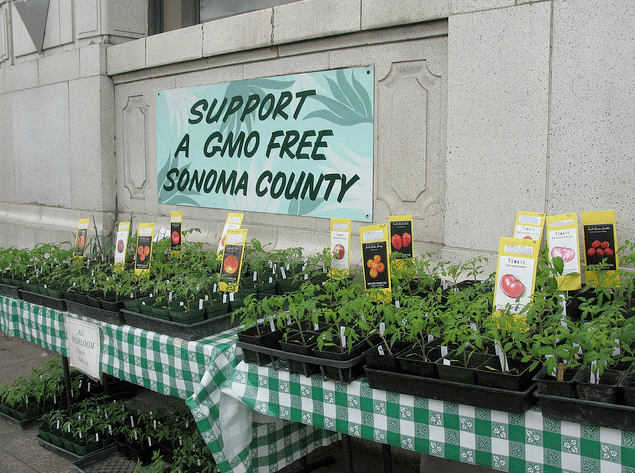
Proposition 37 is a contentious debate in California. (Photo Shira Golding)
CURWOOD: The questions and controversy surrounding genetically modified food are coming to the fore on November's ballot in California. A hotly contested referendum proposition would require labeling of food containing genetically modified organisms. Prop 37, as it's called, has pitted agribusiness giants Monsanto, Nestle, and Kellogg against groups like the Organic Consumers Fund, Cliff Bar, and Dr. Bronner's Magic Soap.
To explain the debate we turn now to Richard Frank; he's a Professor of Environmental Practice at UC Davis and Director of the California Environmental Law and Policy Center. Hi there!
FRANK: Hello!
CURWOOD: So first, lay out the argument for us. What are they saying in the 'Yes' on prop 37 camp?
FRANK: The proponents of Proposition 37 are arguing that the science underlying genetically engineered food remains uncertain, that consumers in California want to know what they're eating and purchasing and have a right to know that, that while in the United States the effort to label or disclose genetically engineered food has not gone too far, that internationally it has — many nations already require this. They emphasize that what they are proposing and what the initiative requires is disclosure, rather than a ban on genetically engineered food.
CURWOOD: And what about the side opposed to this measure? What's their argument?
FRANK: Their argument is, first of all, that there is no scientific basis for concern, that no scientific studies have demonstrated major health problems associated with genetically engineered food. That if there is any need for disclosure or labeling it should be done on the national level, rather than on a state-by-state basis. That the enforcement protocol suggested by the measure would require a number of lawsuits, which private individuals and so-called 'bounty hunters' would be allowed to file. And finally that the initiative, if enacted by California voters, would substantially increase the cost of foods for Californian consumers.
CURWOOD: So what foods would be labeled as containing GMOs if the proposition were to go through?
FRANK: Most raw foods that you would buy in the vegetable or produce bin at the local market would be covered as well as the vast majority of processed foods, everything from cereals to bread and that sort of thing. Most food that consumers would find on their grocery shelves.
CURWOOD: I understand, though, that there are a lot of exemptions in here. For example, milk and dairy products made from cows that are fed genetically modified food wouldn't have to be labeled. What about some other examples, and what's the rationale behind not requiring labels on such products?
FRANK: Well, two other exemptions are for food that is served in restaurants in California and also there's an exemption for alcoholic beverages. So one might say that politics is always the art of the possible and it may be that the initiative proponents didn't want to take on too many lobbies and business groups at one time.
CURWOOD: If Prop 37 passes, how might it affect the rest of the country? Do you think food manufacturers would go and make separate labels for California, or is this likely to spread across the rest of the nation if this does go through?
FRANK: Well, I think this is the one thing where proponents and opponents of the measure likely agree; namely, that if it is enacted in California that it will likely have a catalytic effect and the interest in labeling genetically modified foods is likely to expand to other jurisdictions or potentially even provide the basis for a national labeling requirement. That is one of the objectives of the proponents and it is certainly a major concern, if not fear, of the opponents of Proposition 37.
CURWOOD: Now, I understand that the 'No' on Prop 37 side of this debate has poured millions of dollars into advertisements in California. I think the last time we looked, the opponents had spent some 25 million dollars. The Pro side has spent just a couple of million dollars. How likely is it that this measure will pass?
FRANK: I think it's going to be very close. The early polls suggest that Californians were in support of the measure by a three to one margin. I think as a result of the imbalance of campaign funds on either side, I think that gap is going to narrow considerably as we approach election day and I think it's very much an open question whether this will pass or fail but I think the vote's going to be close.
CURWOOD: UC Davis Professor Richard Frank is Director of the California Environmental Law and Policy Center.
Related links:
-
-
- No on Prop 37
- Yes on Prop 37
[MUSIC: George Benson “California Dreamin” from CTI: The Master Collection (Legacy Records 2006)]
CURWOOD: Coming up - Bird songs of the morning recreated as the great naturalist Aldo Leopold heard them in the last century. Keep listening to Living on Earth!
ANNOUNCER ONE: Support for Living on Earth comes from Breckinridge Capital Advisors, applying a sustainable approach to fixed income investing— www.breckinridge.com— The Grantham Foundation for the Protection of the Environment, supporting strategic communications and collaboration in solving the world's most pressing environmental problems. The Gordon and Betty Moore Foundation, and Gilman Ordway - for coverage of conservation and environmental change. This is Living on Earth on PRI, Public Radio International.
[CUTAWAY MUSIC: Herbie Hancock: “Firewater” from The Prisoner (The Rudy van Gelder Edition Remastered) (Blue Note Records 1969)]
The Place Where You Live
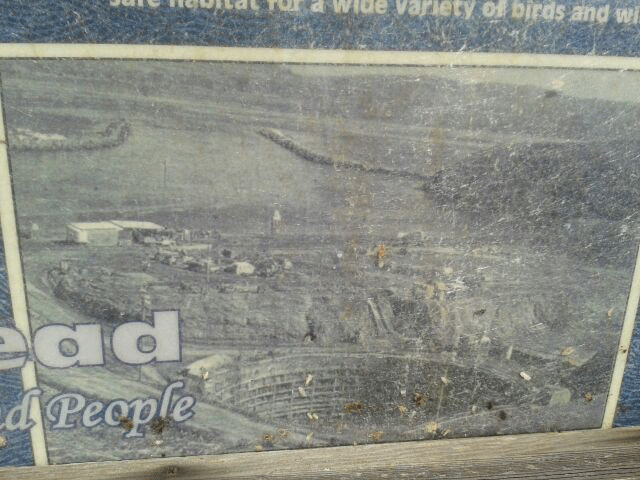
A historic photo shows the construction of the plant in process, the hole at the bottom is for the foundation of the cooling tower, now the pond.
CURWOOD: It's Living on Earth - I'm Steve Curwood. This week we have another in the Living on Earth/Orion Magazine series “The Place Where You Live.” For more than a decade, Orion has invited readers to put their memories of home on a map and submit essays on their website. And now, we’re giving them a voice.
[MUSIC: Edward Sharpe and The Magnetic Zeroes “Home” from Edward Sharpe and The Magnetic Zeroes (Rough Trade Records 2009)]
CURWOOD: That special place you care about doesn’t have to be exotic - but it can be spectacular. That's the case for the spot where Gary Pace of Sebastopol, California goes to feel close to nature.
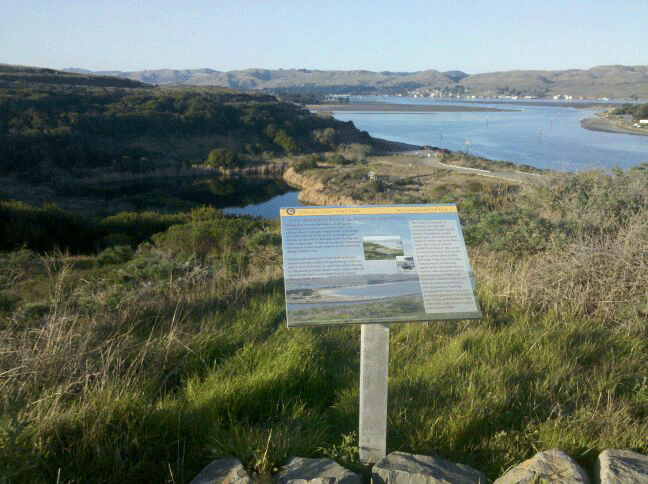
A current photo shows the pond on the left, the foundation of the plant. The bay is on the right, and the San Andreas Fault is along the distant coastline.
PACE: So the Bodega headlands is this really beautiful part of the county where these big, dramatic cliffs sort of drop off suddenly into the ocean and there's sea lions out there and whales go swimming by a couple times a year and there's a big inlet that comes in that goes into this town called Bodega Bay. And right over the inlet is where this "Hole in the Head," the pond is, where they were starting to construct this nuclear plant 50 years ago now. So this spot, "The Hole in the Head," is about 20 minutes away from my house so I go out there regularly as part of I guess a spiritual connection to the bigger forces of the universe.
[Music: Vitamin Piano Series “Goodbye Blue Skies” from The Piano Tribute To Pink Floyd (Vitamin Music 2005)]
Bodega Headlands. The “Hole in the Head” is a small pond tucked behind dramatic cliffs dropping into the ocean. I come to this spot often to make offerings and prayers. Offerings to the land—the wild Northern California Coast—and a prayer of gratitude to the people who had the vision to block construction of a nuclear plant situated directly on the San Andreas Fault.
This crater pond was the site of the excavation for the foundation; amazingly located where the coastline had shifted 15 feet during the 1906 earthquake. In the early 1960s activists worked to stop the construction and prevent a disaster. I often wonder how they found the outrageous hope that they could halt the building of a nuclear plant once the work had started and I ask for similar inspiration.
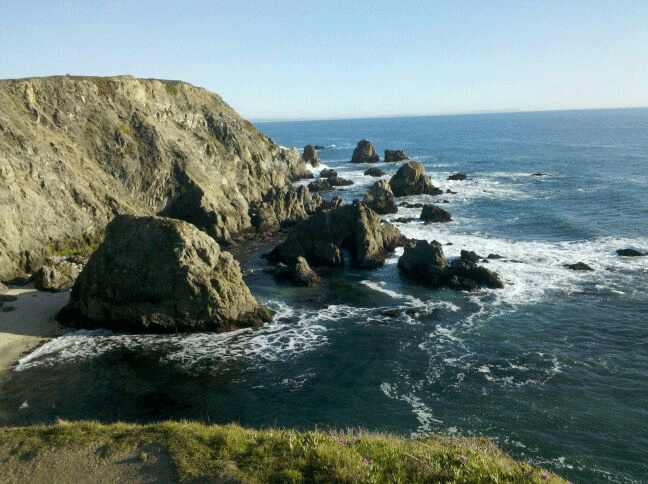
The coast, looking towards Japan.
If it had opened as planned, the reactor would have outlived its utility by now. I would be standing before the shuttered cooling towers, looking out over the barrels of spent fuel rods, a lonely witness to the radioactivity which would persist for scores of human lifetimes. The electricity produced would have long since passed through local residents’ light bulbs and dishwashers, and the relentless search for new power sources would continue.
My thoughts drift to those folks who worked for such a reasonable outcome. As the sea breeze blows across my face, I arrange flowers in honor of the legacy these activists left behind, an ephemeral monument to something that never came to pass.
CURWOOD: Gary Pace lives in Sebastopol, California.
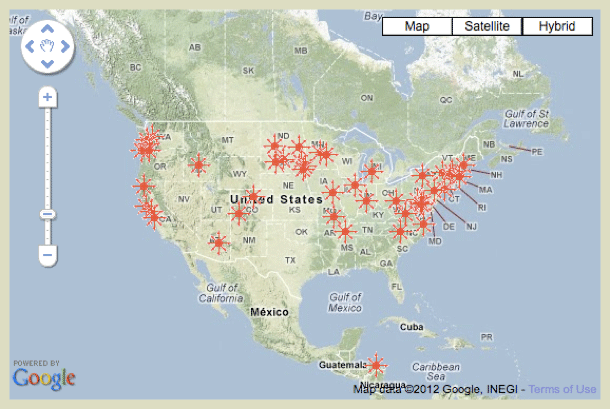
Tell us about "The Place Where You Live." You can find out about our collaboration with Orion Magazine and how to submit your essay by visiting our website, LOE dot org.
Related links:
- Orion Magazine- The Place Where You Live
- Listen to Other Place Where You Live Essays
[Music: Vitamin Piano Series “Goodbye Blue Skies” from The Piano Tribute To Pink Floyd (Vitamin Music 2005)]
Sounds Heard by Aldo Leopold

Aldo Leopold and his dog. (Forest History Society)
CURWOOD: In the early morning before dawn, Aldo Leopold would sit on a bench outside his shack in Sauk County, Wisconsin, with a pot of coffee and a notebook. As the sun rose, he took detailed notes as each bird joined the dawn chorus. Aldo Leopold was well known for his observations of the natural world, gathered in his 1949 book A Sand County Almanac, that many consider to be some of the finest essays on the intrinsic value of nature.
Well, now we can actually hear the chorus that Aldo Leopold made note of in his morning journal, thanks to a team led by Stanley Temple, Professor Emeritus in Conservation at the University of Wisconsin-Madison. Professor Temple joins us from Madison. Welcome to Living on Earth!
TEMPLE: Glad to be here!
CURWOOD: So, Aldo Leopold is an iconic figure to some, but for those of us who aren't as familiar with his work, who was Aldo Leopold?
TEMPLE: Aldo Leopold was probably the most influential conservation thinker of the 20th century. His career spans the first half of the 20th century and during that time he made some remarkable contributions. He began his career as a forester, but by mid-career he turned his attention to broader issues of conservation. And for most people, what they know best about Aldo Leopold, was that he left us A Sand County Almanac. This was, essentially, the culmination of his life journey and it expressed his ideas about our relationship with the natural world.
CURWOOD: Professor Temple, you're a scientist by training, so how did you become so interested in this historical figure?
TEMPLE: Well, I was fortunate during my 32 years as a faculty member at the University of Wisconsin to have occupied the chair that Aldo Leopold once held. Not only was he a hero of mine personally, but because of my professional ties to him I made it my business to learn more about him. And the University's archives has just a remarkable collection of his papers. And among those papers I discovered an unpublished manuscript that he was working on at the time of his death in which he described the work that he had done over a decade of time studying the dawn chorus of birds, and in particular, how the sequence of songs plays out in the early morning light.
CURWOOD: What scientific observations did Aldo Leopold make about the morning bird chorus?
TEMPLE: He became fascinated with the sequence in which birds joined the dawn chorus and he was working on a hypothesis that the sequence was determined by light intensity. That each bird joined in the chorus, cued, you might say, by the intensity of the light. He bought one of the earliest light meters that were available, something that measured light intensity. He was very early in sort of posing this hypothesis. Others in the 1950s when the technology was better followed up and indeed, verified that Leopold's ideas were correct.
CURWOOD: Please describe for us Aldo Leopold's dawn birding routine.
TEMPLE: Well, we could actually use his own words because he does describe it in nice detail in one of his essays in A Sand County Almanac called "Great Possessions:"
"My daily ceremony, contrary to what you might suppose, begins with the utmost decorum. At 3:30 am, with such dignity as I can muster, I step from my cabin door bearing in either hand a pot of coffee and a notebook. I get out my watch, pour coffee, and lay notebook on knee. This is the cue for the proclamations to begin."
CURWOOD: What gave you the idea to try and recreate the sounds that Aldo Leopold heard in his shack in Wisconsin?
TEMPLE: Well, having read the unpublished manuscript, it struck me that you could put together from his notes all of the ingredients that would be required to recreate the sound that he was hearing. Well, it lay on the shelf or in the filing cabinet for many many years and this past summer Brian Pijanowski, who's one of the leaders in the new soundscape ecology movement, invited me to give the keynote address at an NSF workshop that was held at the Leopold Center here in Wisconsin. And I thought this was the perfect incentive to actually go back and see whether indeed we could recreate the soundscape Leopold was listening to from his notes.
CURWOOD: What was your process?
TEMPLE: Well, the process was first, of course, was to go through all of Leopold's notes and develop what you might say is a score. And then I enlisted the help of Chris Bocast, a graduate student here at the University of Wisconsin campus who is an excellent audio engineer. And with the help of the Cornell Lab of Ornithology providing the actual recordings of the bird songs, we were able to put together a facsimile of what Aldo Leopold was listening to back on June 1, 1940.
CURWOOD: I'm wondering what kinds of materials you were working with here; what did Aldo Leopold's notes look like?
TEMPLE: His notes were taken in a shorthand and what he noted was the time at which he first heard each bird joining the chorus. And he then took notes on how frequently he heard each species singing. So with that information, we could actually put the birds into the proper sequence and the proper timing of their calls but it went further than that. If you listen to the tape that we produced, in stereo, we've actually placed the birds in the soundscape in the relative positions that they should be in based on Aldo Leopold's territory maps. So the birds that appear to be coming from the left are birds of the field and prairie. The birds that are coming from the right are birds associated with the woodland and the birds in the middle are the ones associated with the edge in between the field and the woods.
CURWOOD: We’re going to play a clip from your soundscape now. Please, identify some of the sounds for us as we listen.
[SFX: ROBIN SINGING]
TEMPLE: Starts off with the American robin, an early riser.
[BIRD CALLS UNDER THE DISCUSSION]
TEMPLE: You can hear some birds in the distant background but the next bird to join is a field sparrow.
CURWOOD: That trill is the field sparrow?
TEMPLE: That's the field sparrow. We paid attention to the birds that were very close to Leopold, the ones that he said he paid attention to. The next bird you're going to hear is an indigo bunting. You can hear crows in the background.
CURWOOD: Good thing they were in the distance - they can be pretty loud!
TEMPLE: Yeah.
CURWOOD: Now is this a compression of time or is this in real time here?
TEMPLE: We did compress the time; we didn't compress the bird songs. What we did was compress the intervals between each bird's calls, but we compressed them proportional to Leopold's notes. So we actually compressed the first half hour of the day into five minutes. It still sounds pretty much like what it really does sound like. Not quite so much down time between calls.
CURWOOD: Now who else has joined in here?
TEMPLE: The wood pewee comes in followed by the song sparrow and gray catbird. They start to pile on pretty quickly about this point.
CURWOOD: Okay, who's that?
TEMPLE: That's a catbird, sounding like a cat mewing.
CURWOOD: So what does the land around Aldo Leopold's shack look like today?
TEMPLE: Well, it's undergone quite a transformation since 1935 when Aldo Leopold purchased this worn-out farm that had almost no vegetation on it to speak of. He and his family spent many thousands of hours planting prairies, planting trees, and today, of course, what you see is a fairly mature ecosystem and because of that the birds you hear today are a slightly different blend of birds, mix of birds, than Leopold was listening to. There are certainly more species in the dawn chorus today than there were in Leopold's time because of the habitat that Leopold and his family created for them.
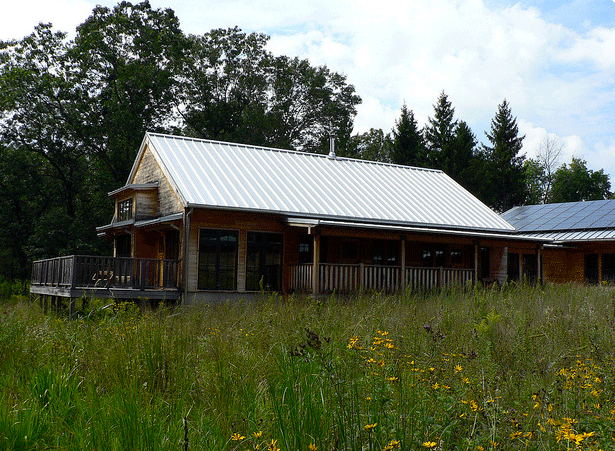
The Aldo Leopold Center (Rebecca Brown)
CURWOOD: So we're going to play a clip now of the dawn sounds around the cabin taken from this summer. Let's have a listen.
[SFX: BIRD SONGS AND DISTANT TRAFFIC SOUNDS]
CURWOOD: Well, there are a lot more birds there but it's pretty hard for me to hear them.
TEMPLE: That's right. But what you do hear is the traffic from the interstate.
CURWOOD: How do you think Aldo Leopold would respond if he could hear the morning soundscape that you recorded in 2012?
TEMPLE: Well, I think Leopold already gives us a hint that he was, to some extent, offended by the sounds of humanity that were impinging on the natural sounds. I'm going to read just a couple of sentences from another of his essays from A Sand County Almanac called "Too Early," in which he talks about arriving very early in a duck blind in a marsh.
"To arrive early in the marsh is an adventure in pure listening. The ear roams at will among the noises of the night without let or hindrance from hand or eye. Like many another treaty of restraint, the pre-dawn pact lasts only as long as darkness humbles the arrogant. By breakfast time comes the honks, horns, shouts, and whistles of an awakening farmyard and finally, at evening, the drone of an unattended radio."
So Leopold was well aware that the sounds of human beings were intruding on natural sounds. So I don't think he'd be surprised. I think he might have been offended by the fact that the interstate highway came so close to his beloved shack.
CURWOOD: What's your favorite passage from A Sand County Almanac that you would feel comfortable reading right now that captures Aldo Leopold's thoughts on nature?
TEMPLE: Well, I think it's one that many people who are conservationists are aware of. It's one that gets quoted fairly often:
"If the land mechanism as a whole is good, then every part of it is good, whether we understand it or not. If the biota in the course of eons has built something we like but do not understand, then who but a fool would discard seemingly useless parts? To keep every cog and wheel is the first precaution of intelligent tinkering."
I think you could apply that golden rule of Aldo Leopold's to the problems of soundscapes being polluted, if you will, by human-generated noises.
CURWOOD: Stanley Temple is a Professor Emeritus at the University of Wisconsin and a senior fellow at the Aldo Leopold Foundation. Thank you, sir.
TEMPLE: You're very welcome.
Related link:
Sounds heard by Aldo Leopold
[Music: Jenny Scheinman “A Ride With Polly Jean” from Mischief And Mayhem (Jenny Scheinman Music 2012)]
CURWOOD: Living on Earth is produced by the World Media Foundation. Bobby Bascomb, Helen Palmer, James Curwood, Mary Bates, Gabriela Romanow and Sammy Sousa all had a hand in making our show, as does our intern Emmett Fitzgerald. Jeff Turton is our technical director. Alison Lirish Dean composed our themes. You can find us anytime at L-O-E dot org - and check out our Facebook page - it's PRI's Living on Earth. I'm Steve Curwood. Thanks for listening.
ANNOUNCER ONE: Funding for Living on Earth comes from the National Science Foundation supporting coverage of emerging science; and Stonyfield Farm, organic yogurt and smoothies. Stonyfield invites you to just eat organic for a day. Details at justeatorganic dot com. Support also comes from you, our listeners, the Go Forward Fund, and Pax World Mutual and Exchange Traded Funds, integrating environmental, social and governance factors into investment analysis and decision-making. On the web at paxworld dot com. Pax World for Tomorrow.
ANNOUNCER TWO: PRI, Public Radio International.
Living on Earth wants to hear from you!
Living on Earth
62 Calef Highway, Suite 212
Lee, NH 03861
Telephone: 617-287-4121
E-mail: comments@loe.org
Newsletter [Click here]
Donate to Living on Earth!
Living on Earth is an independent media program and relies entirely on contributions from listeners and institutions supporting public service. Please donate now to preserve an independent environmental voice.
NewsletterLiving on Earth offers a weekly delivery of the show's rundown to your mailbox. Sign up for our newsletter today!
 Sailors For The Sea: Be the change you want to sea.
Sailors For The Sea: Be the change you want to sea.
 The Grantham Foundation for the Protection of the Environment: Committed to protecting and improving the health of the global environment.
The Grantham Foundation for the Protection of the Environment: Committed to protecting and improving the health of the global environment.
 Contribute to Living on Earth and receive, as our gift to you, an archival print of one of Mark Seth Lender's extraordinary wildlife photographs. Follow the link to see Mark's current collection of photographs.
Contribute to Living on Earth and receive, as our gift to you, an archival print of one of Mark Seth Lender's extraordinary wildlife photographs. Follow the link to see Mark's current collection of photographs.
 Buy a signed copy of Mark Seth Lender's book Smeagull the Seagull & support Living on Earth
Buy a signed copy of Mark Seth Lender's book Smeagull the Seagull & support Living on Earth

